Australia’s monthly diesel imports reached a record of 2,360 ML (495 kb/d) in June 2021. While it is common for imports to vary from month to month there is a long term increasing trend. This is caused by diesel consumption on a continuing growth path while Australian refineries are shutting down.
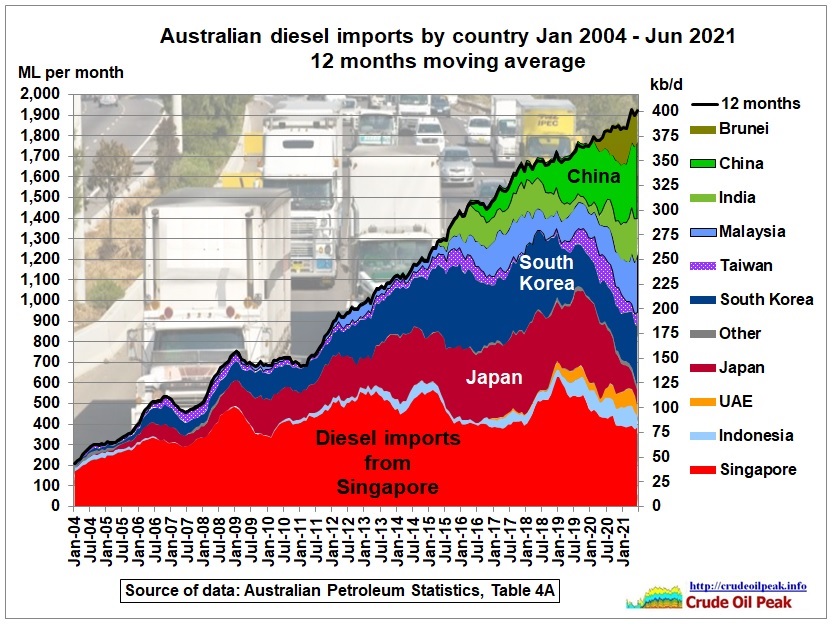 Fig 1: Diesel imports timeline – by country
Fig 1: Diesel imports timeline – by country
We see that under the increasing trend there are other structural changes taking place. Imports from Japan went down.
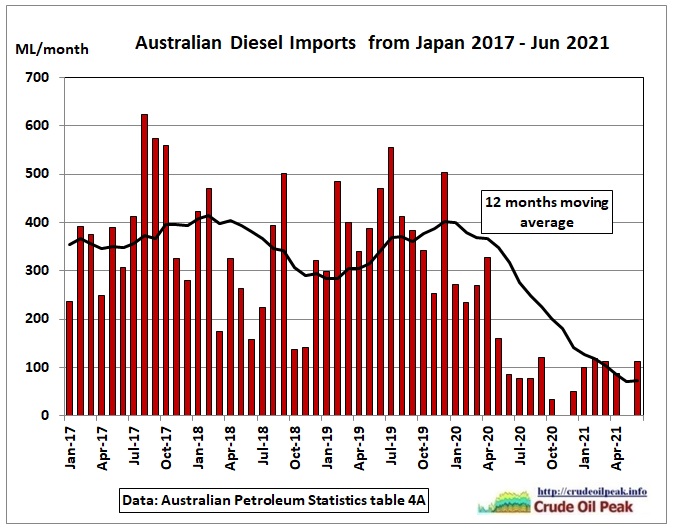 Fig 2: Diesel imports from Japan dropped by 75%
Fig 2: Diesel imports from Japan dropped by 75%
Japan’s refining capacity and throughput is on a long-term decline
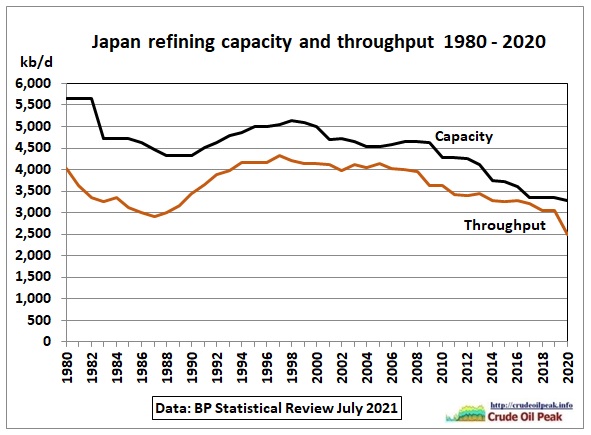 Fig 3: Japan’s refining sector (sixth largest in world)
Fig 3: Japan’s refining sector (sixth largest in world)
The reasons for the reduction in oil demand are Japan’s declining and aging population, high energy efficiency measures and an expanding fleet of hybrid and electric vehicles. Refinery throughput dropped by 550 kb/d in 2020 due to Covid.
In February 2021 there was an earthquake which hit 20% of Japan’s refining capacity
https://www.reuters.com/article/us-refinery-operations-fuji-oil-co-idUSKBN2AF0YZ
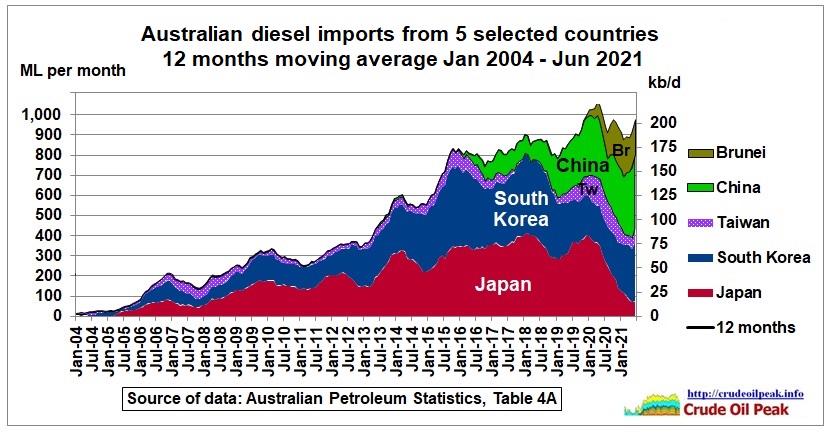 Fig 4: Diesel imports from North East Asian countries and China’s refinery in Brunei
Fig 4: Diesel imports from North East Asian countries and China’s refinery in Brunei
Australia’s declining diesel imports from Japan and to a certain extend from South Korea have been replaced by imports from China, Taiwan and a brand new Chinese refinery in Brunei, thereby creating new dependencies in a concerning context:
7/9/2021 Taiwanese air force responds to incursion by 19 Chinese warplanes as Beijing stays silent
https://www.abc.net.au/news/2021-09-07/chinese-warplanes-enter-taiwanese-air-space/100439132
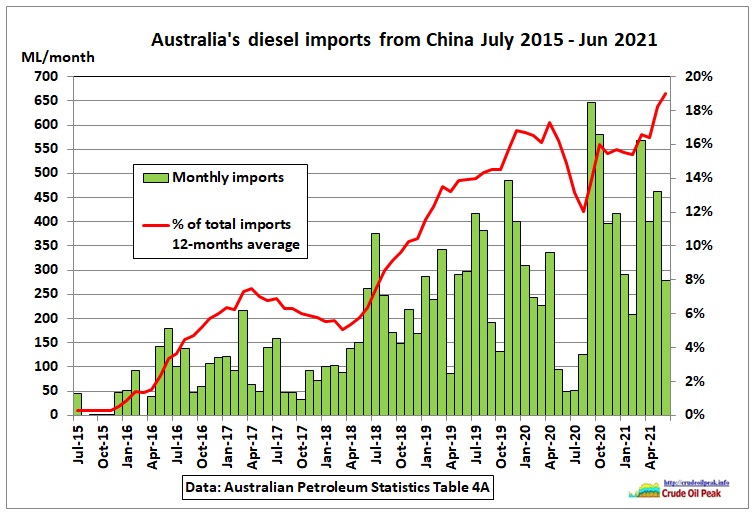 Fig 5: Diesel imports from China
Fig 5: Diesel imports from China
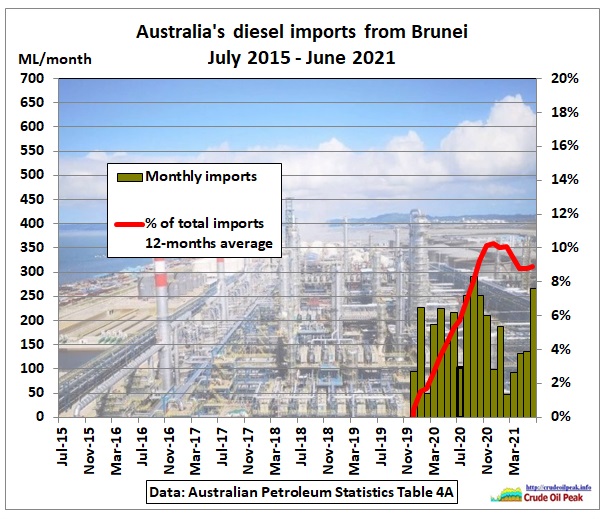 Fig 6: Diesel imports from Brunei
Fig 6: Diesel imports from Brunei
More details are in this post:
25/3/2021 Brunei peak oil – golden opportunity for China’s Belt and Road Initiative
https://crudeoilpeak.info/brunei-peak-oil-golden-opportunity-for-chinas-belt-and-road-initiative
Let’s zoom into the last 4 ½ years:
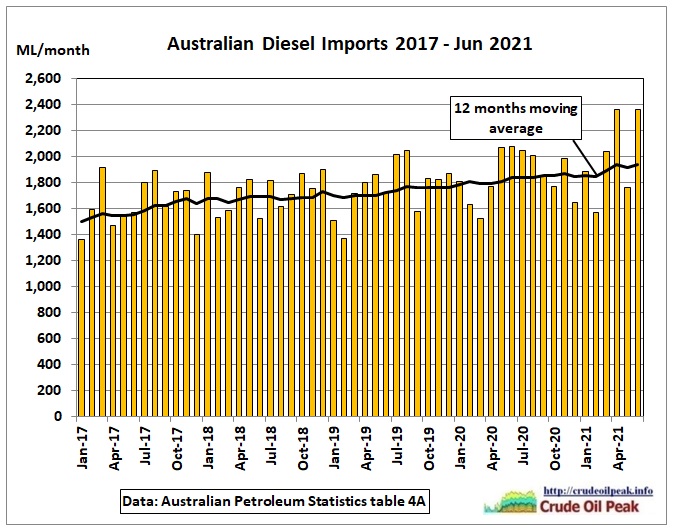 Fig 7: Australia’s monthly diesel imports since Jan 2017
Fig 7: Australia’s monthly diesel imports since Jan 2017
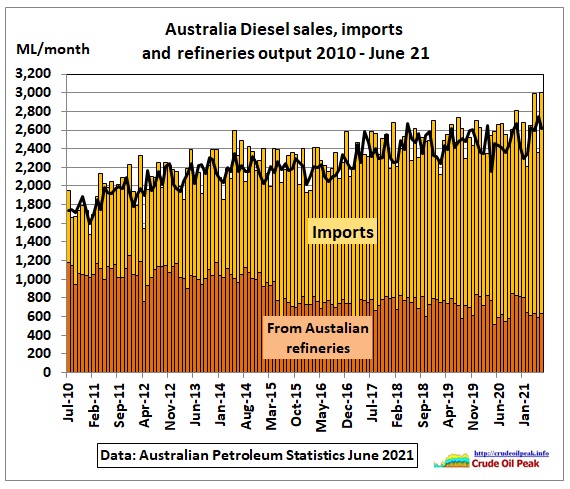 Fig 8: Growing Diesel imports stacked on top of declining local refinery output compared to diesel sales (black line)
Fig 8: Growing Diesel imports stacked on top of declining local refinery output compared to diesel sales (black line)
 Fig 9: Diesel stocks vs imports
Fig 9: Diesel stocks vs imports
In 10 years, stocks almost doubled from 1,000 ML to 1,900 ML but so did monthly imports. The cover is approximately 1 month of imports. This has basically not changed. The graph implies the scenario that all diesel imports stop but that local refineries still import crude and supply diesel to the local market.
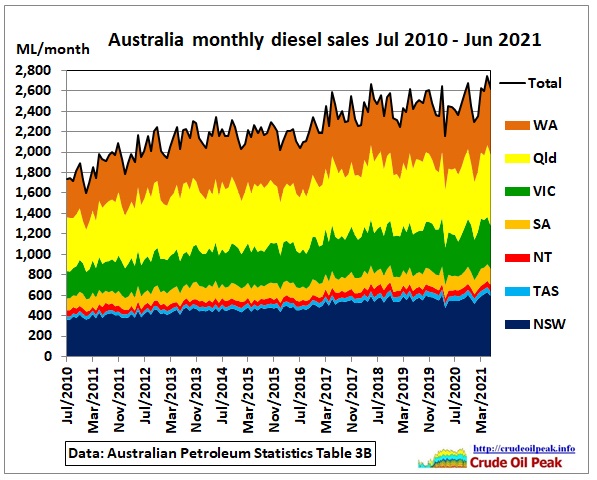 Fig 10: Diesel sales by State
Fig 10: Diesel sales by State
Diesel consumption is a good indicator of economic activities which differ from State to State. Western Australia is dominated by mining while NSW is more an urban economy concentrated in Sydney with large scale infrastructure projects (road tunnels, metro, Western airport) and a booming construction sector (new apartment towers, homes and renovations). A recent uptick in diesel consumption could be explained by more online shopping and home deliveries by truck.
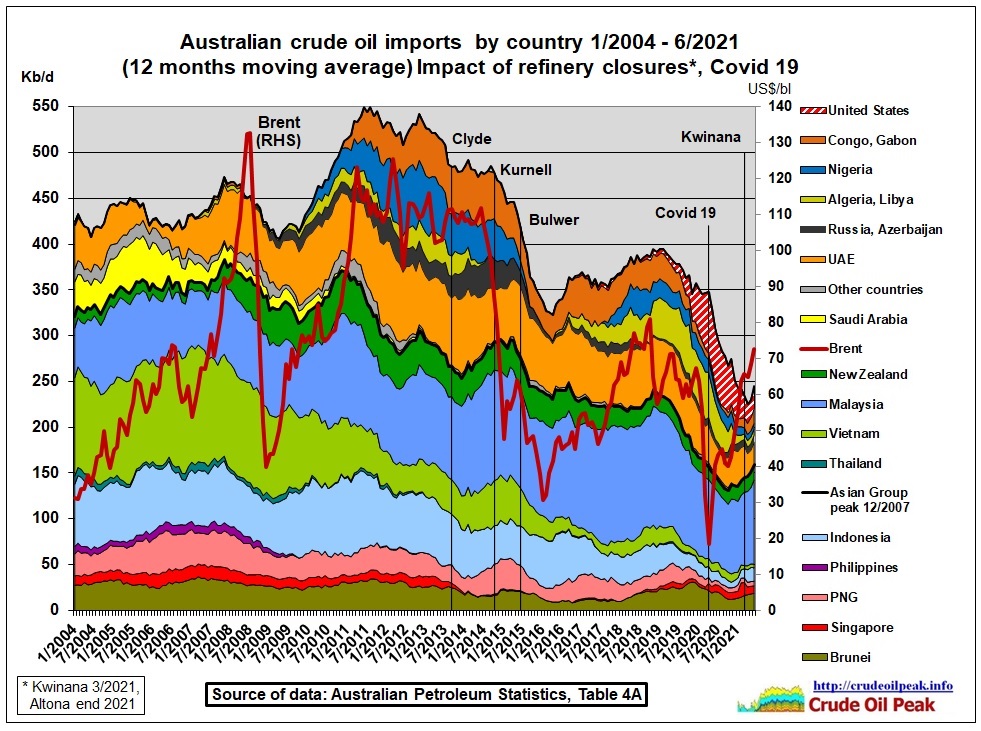 Fig 11: Australia’s declining crude imports
Fig 11: Australia’s declining crude imports
When crude oil imports from neighbouring countries peaked in 2007 Australia successfully diversified its sources into West and North Africa, even Russia. But that geographic bypass waned in recent years. Crude imports from Congo and Gabon have been replaced by the US.
4 Australian refineries have been shut down:
13/4/2011
Australia’s fuel import vulnerability increases as Sydney’s Clyde refinery is closing
http://crudeoilpeak.info/australias-fuel-import-vulnerability-increases-as-sydneys-clyde-refinery-is-closing
17/10/2014
Sydney’s Caltex refinery closed as Chevron’s crude production and sales continue to decline
http://crudeoilpeak.info/sydneys-caltex-refinery-closed-as-chevrons-crude-production-and-sales-continue-to-decline
9/4/2014
Why the closure of BP’s Brisbane Bulwer refinery reduces Australia’s energy security
http://crudeoilpeak.info/why-the-closure-of-bps-brisbane-bulwer-refinery-reduces-australias-energy-security
14/11/2020
Australia’s BP Kwinana refinery closure: peak oil context
https://crudeoilpeak.info/australias-bp-kwinana-refinery-closure-peak-oil-context
Another one to go:
https://tankterminals.com/news/exxon-mobil-plans-closure-of-another-australian-oil-refinery/
15/2/2021
Exxon-Mobil’s refinery closure in Australia: peak oil context
https://crudeoilpeak.info/exxon-mobils-refinery-closure-in-australia-peak-oil-context
At least some good news:
7/9/2021
Nearly 12 months after announcing the closure of Perth’s 65-year-old Kwinana oil refinery saying it was no longer economically viable, BP has detailed plans to conduct a feasibility study to consider repurposing the site for manufacturing hydrogen.
The study would be conducted in partnership with Macquarie and partly funded by the WA state government, BP said.
https://www.smh.com.au/business/companies/bp-macquarie-see-a-green-future-for-shuttered-australian-oil-refinery-20210907-p58pl7.html
Whether and when that hydrogen (liquid H at -253 ͦ C, much lower than LNG at – 162 ͦ C and close to the absolute minimum of – 273 ͦ C) could replace diesel is a big question. Just exporting hydrogen does not solve the diesel import problem.
World’s Largest Long-Haul Truckmaker Sees Hydrogen-Fueled Future
23/5/2021
https://www.nytimes.com/2021/05/23/business/hydrogen-trucks-semis.html
Conclusion
From the strategic point of view, crude imports to Australian refineries are preferable to fuel imports because the sources of crude can be more diversified and tanker routes e.g. in the Indian Ocean or the Pacific Ocean are less vulnerable compared to fuel supplies via the South China Sea. Australia’s crude oil reserve in the US needs local refineries.
However, aging Australian refineries are shutting down anyway (quite similar to old coal fired power plants closing). Therefore, the changes described above are dictated by circumstances beyond Australia’s control.
Diesel imports make Australia dependent on geopolitics, structural developments and events in the countries of origin and the sources of their crude supplies. Fuel importers will of course monitor this situation and adapt their supply chains accordingly. But there could be events in the Middle East, the South China Sea or even China itself which may narrow down any options now still available to fuel importers.
There is a lot of media interest about electric cars (EVs). What is much more important is a replacement for diesel fuels. Until this is economically and reliably available, no new infrastructure should be built which counts on increasing diesel consumption. And this imperative puts into question the perpetual growth narrative of all governments.
Related posts:
4/9/2021
Asia Pacific peak oil: 2020 production continued decline at -2.7% pa
https://crudeoilpeak.info/asia-pacific-peak-oil-2020-production-continued-decline-at-2-7-pa
29/8/2021
China increased oil imports in Covid stricken 2020 by a lucky 8.8%
https://crudeoilpeak.info/china-increased-oil-imports-in-covid-stricken-2020-by-a-lucky-8-8
22/5/2020
Australia outsources its oil reserve problem to the US
https://crudeoilpeak.info/australia-outsources-its-oil-reserve-problem-to-the-us